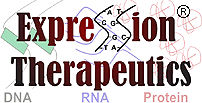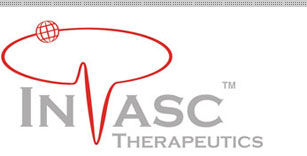预约演示
更新于:2025-05-07

Vigene Biosciences, Inc.
更新于:2025-05-07
概览
标签
遗传病与畸形
血液及淋巴系统疾病
其他疾病
腺相关病毒基因治疗
疾病领域得分
一眼洞穿机构专注的疾病领域
暂无数据
技术平台
公司药物应用最多的技术
暂无数据
靶点
公司最常开发的靶点
暂无数据
| 疾病领域 | 数量 |
|---|---|
| 血液及淋巴系统疾病 | 1 |
| 排名前五的药物类型 | 数量 |
|---|---|
| 腺相关病毒基因治疗 | 1 |
| 排名前五的靶点 | 数量 |
|---|---|
| F10(凝血因子X) | 1 |
关联
1
项与 Vigene Biosciences, Inc. 相关的药物靶点 |
作用机制 F10刺激剂 [+1] |
在研适应症 |
非在研适应症- |
最高研发阶段临床1/2期 |
首次获批国家/地区- |
首次获批日期- |
100 项与 Vigene Biosciences, Inc. 相关的临床结果
登录后查看更多信息
0 项与 Vigene Biosciences, Inc. 相关的专利(医药)
登录后查看更多信息
2
项与 Vigene Biosciences, Inc. 相关的文献(医药)2025-01-01·BBA Advances
Quality assessment strategy development and analytical method selection of GMP grade biological drugs for gene and cell therapy
Review
作者: Sun, Xiulian ; Johnson, Nicole ; Yang, Quan-En ; Lee, Nicole ; Zhang, Jian ; Hong, Jennifer ; Zhao, Jenny Qinghua
Frontiers in Cellular Neuroscience3区 · 医学
Recombinant Adeno-Associated Virus Serotype 6 (rAAV6) Potently and Preferentially Transduces Rat Astrocytes In vitro and In vivo
3区 · 医学
ArticleOA
作者: Schober, Alexandra L ; Mongin, Alexander A ; Gao, Guangping ; Jacobson, Lauren ; Gagarkin, Dmitriy A ; Chen, Ying
37
项与 Vigene Biosciences, Inc. 相关的新闻(医药)2024-03-14
Charles River will help bring NT-Z001 to the clinic by leveraging its off-the-shelf plasmid products, custom plasmid capabilities and adeno-associated virus (AAV) production.
After charting multiple personalized medicine expansions in recent years, contract manufacturer Charles River Laboratories is back with another gene therapy pact—this time centered on an adeno-associated virus 9 (AAV9) candidate meant to serve as a non-opioid alternative for rare disease patients living with chronic pain.
Charles River on Thursday announced a new accord with epigenetic gene therapy outfit Navega Therapeutics as part of the CDMO’s Cell and Gene Therapy Accelerator Program.
The deal will grant Navega access to Charles River’s contract development and manufacturing capabilities and advisory services to produce the AAV gene therapy candidate NT-Z001 for phase 1 clinical trials, the companies said in a press release.
Navega is positioning its gene therapy candidate to help treat chronic pain associated with rare diseases like small fiber neuropathy and primary erythromelalgia. The drug leverages Navega’s artificial intelligence-enabled zinc-finger gene-editing platform, the company explained.
NT-Z001 specifically addresses a gain-of-function mutation in the Nav 1.7 gene, which is linked to inherited erythromelalgia, small fiber neuropathy and other chronic, debilitating pain disorders. Aside from pain tied to rare diseases, Navega figures its gene therapy could eventually address other pain indications, including neuropathic and inflammatory pain.
Charles River, for its part, will help bring NT-Z001 to the clinic by leveraging its off-the-shelf plasmid products, custom plasmid capabilities and AAV production.
Over the years, Charles River says it has significantly enhanced its cell and gene portfolio through a mix of acquisitions, capacity expansions and manufacturing platform launches, including eXpDNA for plasmids, nAAVigation for AAV and Lentivation for lentiviral vectors.
Back in November 2022, the company debuted the expansion of its cell therapy manufacturing facility in Memphis, Tennessee. The plant reveal came just weeks after the CDMO opened a separate plasmid production facility in the U.K. Under the expansion, Charles River added nine processing suites to its 16 clean rooms at the Memphis site.
The additions were designed to handle high-volume production—plus options for dual production lines—for late-stage clinical and commercial cell therapies, the company said at the time.
Charles River also recently acquired a site in Rockville, Maryland, through its $350-million buyout of gene therapy CDMO Vigene Biosciences back in 2021. The site largely helps with the production of viral vectors, which have experienced supply constraints among advanced cell and gene therapies for several years.
Elsewhere on the personalized medicines front, Charles River last year linked up with South Korea’s Rznomics to develop and crank out viral vectors for its partner’s experimental liver cancer gene therapy RZ-001. RZ-001 marks the first ribozyme-based RNA reprogramming approach to receive FDA authorization for evaluation in humans, the companies said last January.

基因疗法并购临床1期细胞疗法
2024-02-13
·药融圈
▲3月7-8日 成都生物医药创新者峰会 · 点击立即报名注:本文不构成任何投资意见和建议,以官方/公司公告为准;本文仅作医疗健康相关药物介绍,非治疗方案推荐(若涉及),不代表平台立场。任何文章转载需得到授权。2024年刚刚开启,医药圈便开始人事大调整。其中阿斯利康、礼来、辉瑞跨国药企和国内本土药企君实生物和药明生物等均纷纷刷新高层人员新架构。天星医药 1月26日上午,南京医药副总裁彭玉萍、人力资源部总经理谈永胜一行到天星医药召开干部大会。会上,南京医药人力资源部总经理谈永胜宣读关于天星医药领导班子任命文件,刘光进、彭青松、李君辉同志被任命为公司副总经理。阿斯利康肿瘤业务人事变动调整后,赖明隆将全面负责阿斯利康中国最大的业务部门——肿瘤业务,他的最新职位为“阿斯利康中国总经理,肿瘤业务总经理”。赖明隆赖明隆拥有美国加州大学医学博士学位,加州大学伯克利分校公共卫生硕士学位,哈佛大学生物科学学士学位。他曾在波士顿咨询公司担任项目负责人,还曾在赛诺菲担任副总裁。2017年6月,赖明隆正式加入阿斯利康中国,负责心血管代谢业务部,2019年1月被升任为阿斯利康中国总经理。去年11月,阿斯利康肿瘤肺癌事业部曾发生人事变动。原阿斯利康中国副总裁、肿瘤肺癌事业部负责人刘明由于个人发展原因,决定离开阿斯利康中国;12月1日,原辉瑞疫苗事业部总经理张凌燕决定加入阿斯利康,接任这一职务。新业务部成立林骁出任阿斯利康中国生物制药业务总经理、呼吸吸入和生物制剂事业部负责人、香港及澳门地区负责人,并加入全球BBU管理团队,全面负责阿斯利康中国慢病领域业务发展,以及呼吸吸入和生物制剂事业部和香港及澳门地区具体业务。林骁此次调整后,林骁将直接汇报给王磊。同时,呼吸雾化、消化、疫苗和免疫疗法、自体免疫事业部负责人陈曦,以及心血管、肾脏及代谢事业部负责人关冬梅,将汇报给林骁。林骁毕业于浙江大学,此前曾在赛诺菲担任亚洲及大中华区战略规划负责人、赛诺菲中国核心产品事业部市场负责人,也曾担任平安好医生副总裁。2019年6月,林骁加入阿斯利康担任阿斯利康中国助理副总裁,负责肾脏治疗领域,后又晋升为阿斯利康中国副总裁,并担任呼吸及自体免疫事业部负责人。礼来1月9日,礼来中国宣布迎来新任总裁兼总经理Huzur Devletsah,这是礼来中国首位女性掌门人。Huzur是土耳其人,于1998年加入礼来公司,在中国任职之前,她曾担任礼来意大利、中东欧、俄罗斯独联体国家以及以色列的总裁兼总经理。Huzur还历任过多个礼来全球要职,其中包括中东董事总经理、礼来生物医药战略及运营高级总监、国际糖尿病事业部负责人,职责覆盖销售、市场营销、战略规划、业务拓展、市场准入和公共事务等多个领域。两个月前的11月10日,上一任礼来中国总裁兼总经理贝栎铭宣布将离任中国,据称是出于家庭原因离开。而他于2022年9月就任礼来中国总裁兼总经理,在任仅1年多。而中国区负责人的每次变动,恰好也是其中国区业绩的转折阶段。辉瑞1月8日,辉瑞宣布,王玉将担任辉瑞中国肿瘤事业部总经理,全面负责肿瘤业务的战略规划和整体运营,直接汇报于辉瑞全球国际市场中国区总裁彭振科(Jean-Christophe Pointeau) 。该项任命自2024年1月9日起生效。王玉拥有南开大学工商管理硕士学位,目前从事制药行业已超25年。早年间,王玉曾就职于辉瑞和葛兰素史克,担任过销售管理及市场管理等重要岗位,不过,其最为业界熟知的是在西安杨森(现强生创新制药)期间的工作经历。安斯泰来近日,安斯泰来宣布,赵萍将就任安斯泰来中国区总裁,该项任命自1月15日起生效。赵萍,也是医药外企高管圈的风云人物,曾经的一位临床妇产科医生,最终走到了外企总经理的位置。赵萍赵萍毕业于上海同济大学医学院,有3年临床医生经历,1993年,加入百时美施贵宝,开启医药职场。之后转战多家公司,礼来,百特,艾尔建等,于18年再次回到施贵宝,担任中国大陆及香港地区总经理,她成功主导了中国第一个PD-1单抗欧狄沃上市。2019年,加入创新药民企基石药业,担任大中华区总经理,负责公司产品的商业化推在2022年3月,赵萍从基石离职,加入一家初创药企,毕诺济生物,担任CEO。君实生物1月12日盘后,君实生物(688180)发布高管人员任职变动公告:公司董事会选举举NING LI(李宁)先生为副董事长。此外,由于岗位调整,获任后的李宁不再担任公司总经理兼CEO,公司将聘任李宁为公司全资子公司拓普艾莱生物技术有限公司(TopAlliance Biosciences Inc.)董事长,负责公司海外业务。图:李宁博士同时,董事会同意聘任邹建军女士为公司总经理兼首席执行官,负责主持公司全面工作。邹建军,女,1971 年 7 月出生,中国国籍,拥有美国永久居留权。2022 年 4 月至 2024 年 1 月,担任公司副总经理兼全球研发总裁;2022 年 6 月至今担任 公司执行董事。图:邹建军博士邹建军女士于 1989 年进入第四军医大学临床医学系学习,1995 年毕业获得临床医学学士学位,1995 年 8 月至 2005 年 9 月,分别在解放军 301 医院临床医学部肿瘤科和上海长征医院肿瘤科任住院医生及主治医生,2005 年 8 月获得第二军医大学临床肿瘤学博士学位。2005 年 10 月至 2012 年 10 月,在 德国拜耳医药历任中国肿瘤研发部医学经理、治疗领域负责人、全球医学事务负 责人(美国总部新泽西);2012 年 10 月至 2015 年 9 月,在美国新基医药任中 国医学事务负责人;2015 年 9 月至 2022 年 4 月,在江苏恒瑞医药股份有限公司 任首席医学官、副总经理。药明生物 1月16日,药明生物(02269)发布公告,周伟昌将于2024年3月31日退休。同日,他将卸任公司首席技术官以及全球生物制药开发及运营总裁的职务。于卸任公司高级管理人员后,周博士将调任为非执行董事兼全球生物制药开发及运营名誉总裁及首席执行官高级顾问,继续支持公司的发展。周博士会继续担任董事会战略委员会成员。董事会亦谨此宣布,Sherry Gu博士(「Gu博士」)已获任命并将于周博士退休后 接任其职责,担任本公司首席技术官及执行副总裁、生物制药开发及生产部负 责人。Gu博士,53岁,于二零一七年加入本公司,担任美国西部CMC (Chemistry, Manufacturing and Controls)管理部副总裁,二零一九年其职责扩大到美国东部, 二零二一年同时负责欧洲CMC管理。在此期间,她直接领导了多个CMC早期 和后期项目,并取得了多个项目IND (Investigational New Drug)、PPQ (Process Performance Qualification)和 审 批 里 程 碑,包 括 通 过VIR-GSK合作对抗全球 COVID-19大流行的Sotrovimab从DNA到EUA (Emergency Use Authorization)批准。Gu博士拥有麻省理工学院生物化学工程博士学位。她在生物制药领域工作超 过25年,包括在Bristol Myers Squibb公司工作两年,在Eli Lilly and Company工作 18年,之后加入本公司。万泰生物 1月15日,万泰生物发布公告,称其董事会近日收到董事长兼总经理邱子欣提交的书面辞职报告。邱子欣根据公司战略发展需要、企业高质量成长需要、干部年轻化需要,邱子欣决定将主要精力集中在董事长工作职责和公司战略发展上,申请辞去公司总经理一职,辞职后仍继续担任公司董事长职务和董事会专门委员会委员相关职务。姜植铭女士经公司董事长邱子欣提名、董事会提名委员会审核,董事会同意聘任姜植铭女士为公司总经理,任期自本次董事会审议通过之日起至第五届董事会任期届满之日止。姜植铭女士,1973年出生,美国国籍,博士研究生。2002年至2022年初,就职于丹纳赫集团贝克曼库尔特,历任分子诊断全球市场经理、生命科学及临床 诊断亚太区市场总监、亚太区(中国外区域)总经理、全球高级副总裁及中国区总经理;2022年初至2023年12月,任武汉联影智融医疗科技有限公司总裁。复星医药1月17日,复星医药发布两则公告,一则宣布已接到袁宁先生的书面辞职函。因个人原因,袁宁先生向复星医药董事会申请辞去副总裁职务。自2024年1月17日起,袁宁先生不再担任复星医药副总裁职务。 另一则公告中宣布,经首席执行官提名,同意晋升聘任冯蓉丽女士、李静女士(本次改聘前均任公司高级副总裁)为执行总裁,晋升后职务的任期自2024年1月17日起至本届董事会任期届满之日止。袁宁先生,1977年出生,博士,曾任复星医药副总裁、联席首席商务发展官(联席CBO)、业务发展部总经理。袁宁先生于2007年9月加入复星医药,于2007年9月至2015年6月任职于江苏万邦生化医药股份有限公司(现为江苏万邦生化医药集团有限责任公司),于2015年6月至2020年12月历任上海复星医药产业发展有限公司总裁助理,副总裁,战略产品发展中心副总经理、总经理,于2016年8月至2020年12月任上海复星医药(集团)股份有限公司总裁助理,于2016年8月至今任复星医药业务发展部总经理,于2021年1月至2022年1月任复星医药副首席商务发展官(副CBO)、产业公司高级副总裁兼战略产品发展中心总经理。加入复星医药前,袁宁先生曾于1999年7月至2001年9月任职于南京美瑞制药有限公司研发部、市场部。冯蓉丽女士,1975年9月出生,中国国籍,现任复星医药执行总裁、首席人力资源官(CHO)兼人力资源部总经理。冯蓉丽女士于2020年4月加入复星医药集团,于2020年4月至2021年3月任公司副总裁,于2020年4月起任公司人力资源部总经理,于2021年3月至2024年1月任公司高级副总裁。 加入复星医药集团前,冯蓉丽女士于2009年11月至2015年1月任上海罗氏制药有限公司人力资源总监,于2015年2月至2018年7月任F. Hoffmann-La Roche AG人力资源高级总监,于2018年7月至2020年4月任上海复星高科技(集团)有限公司副首席人力资源官、上海复星创业投资管理有限公司人力资源董事总经理。李静女士,1972年10月出生,中国国籍,现任复星医药执行总裁、成熟产品及制造事业部首席执行官。李静女士于2022年5月加入复星医药集团,于2022年8月至2024年1月任公司高级副总裁,于2022年5月至2023年1月任公司成熟产品及制造事业部总裁,于2023年1月起任公司成熟产品及制造事业部首席执行官。加入复星医药集团前,李静女士于2003年1月至2013年11月历任天津药业集团有限公司总工程师,天津药业研究院股份有限公司总经理、院长,天津金耀氨基酸有限公司董事长;于2013年12月至2022年5月历任天津药业集团有限公司党委副书记、总经理、董事长、党委书记、董事;于2017年7月至2022年4月任天津药业研究院股份有限公司董事长;于2020年5月至2022年4月任天津市医药集团有限公司总工程师;于2020年10月至2022年4月任天津医药集团研究院有限公司(现为津药生物科技(天津) 有限公司)董事长;于2021年7月至2022年5月任天津天药药业股份有限公司党委书记、董事长。 宜明生物 1月25日,宜明生物隆重宣布,正式任命Jeffery Hung博士为宜明生物全球首席商务官,全面负责宜明生物全球市场的开拓与发展工作,推动集团全球CGT CDMO 和 CRO 业务的增长。Jeffery Hung博士Jeffery Hung博士在生物创新药领域具有从药物研发到CXO服务的深厚行业经验,特别是在基因和细胞治疗领域拥有丰富的产业化服务经验。在加入宜明生物之前,Jeffery Hung博士曾任AAV CDMO服务公司Vigene Biosciences的首席商务官、cGMP业务总经理。凭借卓越的市场敏锐性和优异的运营管理,实现了公司业务在全球市场上2016-2021期间年平均增长率65%的稳健增长。Jeffery Hung博士在基因和细胞治疗的专业领军能力被全球再生药物联盟Alliance of Regenerative Medicine (ARM)认可,应邀成为权威的A-Gene和 A-Cell再生药物联盟的行业标准教科书的作者和编辑,同时担任AAV基因药物(Drug Product)的主要作者,并参与慢病毒生产文章的撰写和编辑。在2021年6月,Jeffery Hung参与完成Vigene Biosciences 以近三亿美元被世界著名公司- Charles River Laboratories收购事宜。Jeffery Hung博士曾任职于治疗癌症的生物技术公司Exelixis,担任研究科学家,在治疗癌症的创新小分子药物开发方面积累了丰富的研究经验。他在生命科学服务领域的经历起于Harvard Bioscience,并陆续在Invitrogen、QIAGEN、ATCC、GeneScript等跨国生物技术企业担任商务高管、集团副总裁等职务。Jeffery Hung 北京大学本科毕业,在康奈尔大学获得遗传学博士(Ph.D.),在加州伯克利大学获得商务管理硕士(MBA)。 宜联生物 1月1日,苏州宜联生物医药有限公司隆重宣布,正式聘任李嘉先生为公司首席财务官(CFO)。李嘉先生将向公司董事长兼CEO薛彤彤博士汇报,负责整体财务规划与管理、公司融资与上市、发展战略等财务金融工作,以推进公司业务的国际化进程和进一步稳健发展,解决更多未满足的临床需求。李嘉先生在财务、金融和资本市场管理领域拥有超过20年的丰富经验。加入宜联生物之前,李嘉先生曾担任荣昌生物的首席财务官,在融资、港股及A股上市、整体财务规划和管理等方面发挥了重要的作用。李嘉先生在高盛亚洲、摩根士丹利香港、巴克莱银行纽约等金融机构拥有超过15年的投资银行经验,帮助客户完成多笔股权、债券融资和跨境并购项目。李嘉先生拥有芝加哥大学商学院的MBA学位,以及威斯康星大学麦迪逊分校的金融、会计学士和硕士学位。 博锐生物1月1日,浙江博锐生物制药有限公司宣布,任命万云涛先生担任公司副总裁,负责公司临床开发和运营、项目推进及管理等业务,向博锐生物CEO王海彬博士汇报。万云涛先生万云涛先生在免疫和肿瘤等疾病领域的新药研发和临床研究等领域深耕近30年。带着海外知名药企的丰富工作经验回国后,曾在罗氏和拜耳担任过核心临床部门负责人。在加入博锐生物之前,他曾任职创胜集团临床开发高级副总裁、石药集团临床开发事业部总裁和创响生物首席开发官,在跨国公司、本土药企及创新药公司都有深厚的积累,组建过近千人规模的全职能临床研究团队,在领导全球各地的临床开发和高质量团队合作方面成绩斐然。万云涛先生毕业于美国罗格斯大学和上海复旦大学,获得神经生物学硕士学位。参考资料:各公司官网版权声明:本文转自生物药大时代,如不希望被转载的媒体或个人可与我们联系,我们将立即删除 活动推荐 3月 • NDC x 2024新药创新者峰会 关键词: ADC,改良型新药,小分子新药,GLP-1药物(点击下方图片查看详情)▼【关于药融圈】药融圈PRHub旨在帮助生物医药科技型企业进行品牌推广及商务拓展服务,针对客户的真实需求制定系统化解决方案,通过“翻译-降维-场景化”将客户的品牌信息以直白易懂的方式被公众知悉,同时在流量渠道覆盖100万+垂直用户基础上实现合作目的,帮助合作伙伴完成从品牌开始到商务为终的闭环营销服务。我们已经完成了数十场线下1000人规模的生物医药研发类会议,涵盖小分子新药,大分子新药,改良型新药,BD跨境交易等多个领域,服务了百余家上市/独角兽/生物技术/制药企业。
疫苗高管变更免疫疗法
2024-02-12
·药事纵横
声明:因水平有限,错误不可避免,或有些信息非最及时,欢迎留言指出。本文仅作医疗健康相关药物介绍,非治疗方案推荐(若涉及);本文不构成任何投资建议。2024年刚刚开启,医药圈便开始人事大调整。其中阿斯利康、礼来、辉瑞跨国药企和国内本土药企君实生物和药明生物等均纷纷刷新高层人员新架构。天星医药
1月26日上午,南京医药副总裁彭玉萍、人力资源部总经理谈永胜一行到天星医药召开干部大会。会上,南京医药人力资源部总经理谈永胜宣读关于天星医药领导班子任命文件,刘光进、彭青松、李君辉同志被任命为公司副总经理。阿斯利康
肿瘤业务人事变动调整后,赖明隆将全面负责阿斯利康中国最大的业务部门——肿瘤业务,他的最新职位为“阿斯利康中国总经理,肿瘤业务总经理”。赖明隆赖明隆拥有美国加州大学医学博士学位,加州大学伯克利分校公共卫生硕士学位,哈佛大学生物科学学士学位。他曾在波士顿咨询公司担任项目负责人,还曾在赛诺菲担任副总裁。2017年6月,赖明隆正式加入阿斯利康中国,负责心血管代谢业务部,2019年1月被升任为阿斯利康中国总经理。去年11月,阿斯利康肿瘤肺癌事业部曾发生人事变动。原阿斯利康中国副总裁、肿瘤肺癌事业部负责人刘明由于个人发展原因,决定离开阿斯利康中国;12月1日,原辉瑞疫苗事业部总经理张凌燕决定加入阿斯利康,接任这一职务。新业务部成立林骁出任阿斯利康中国生物制药业务总经理、呼吸吸入和生物制剂事业部负责人、香港及澳门地区负责人,并加入全球BBU管理团队,全面负责阿斯利康中国慢病领域业务发展,以及呼吸吸入和生物制剂事业部和香港及澳门地区具体业务。林骁此次调整后,林骁将直接汇报给王磊。同时,呼吸雾化、消化、疫苗和免疫疗法、自体免疫事业部负责人陈曦,以及心血管、肾脏及代谢事业部负责人关冬梅,将汇报给林骁。林骁毕业于浙江大学,此前曾在赛诺菲担任亚洲及大中华区战略规划负责人、赛诺菲中国核心产品事业部市场负责人,也曾担任平安好医生副总裁。2019年6月,林骁加入阿斯利康担任阿斯利康中国助理副总裁,负责肾脏治疗领域,后又晋升为阿斯利康中国副总裁,并担任呼吸及自体免疫事业部负责人。礼来1月9日,礼来中国宣布迎来新任总裁兼总经理Huzur Devletsah,这是礼来中国首位女性掌门人。Huzur是土耳其人,于1998年加入礼来公司,在中国任职之前,她曾担任礼来意大利、中东欧、俄罗斯独联体国家以及以色列的总裁兼总经理。Huzur还历任过多个礼来全球要职,其中包括中东董事总经理、礼来生物医药战略及运营高级总监、国际糖尿病事业部负责人,职责覆盖销售、市场营销、战略规划、业务拓展、市场准入和公共事务等多个领域。两个月前的11月10日,上一任礼来中国总裁兼总经理贝栎铭宣布将离任中国,据称是出于家庭原因离开。而他于2022年9月就任礼来中国总裁兼总经理,在任仅1年多。而中国区负责人的每次变动,恰好也是其中国区业绩的转折阶段。辉瑞1月8日,辉瑞宣布,王玉将担任辉瑞中国肿瘤事业部总经理,全面负责肿瘤业务的战略规划和整体运营,直接汇报于辉瑞全球国际市场中国区总裁彭振科(Jean-Christophe Pointeau) 。该项任命自2024年1月9日起生效。王玉拥有南开大学工商管理硕士学位,目前从事制药行业已超25年。早年间,王玉曾就职于辉瑞和葛兰素史克,担任过销售管理及市场管理等重要岗位,不过,其最为业界熟知的是在西安杨森(现强生创新制药)期间的工作经历。安斯泰来
近日,安斯泰来宣布,赵萍将就任安斯泰来中国区总裁,该项任命自1月15日起生效。赵萍,也是医药外企高管圈的风云人物,曾经的一位临床妇产科医生,最终走到了外企总经理的位置。赵萍赵萍毕业于上海同济大学医学院,有3年临床医生经历,1993年,加入百时美施贵宝,开启医药职场。之后转战多家公司,礼来,百特,艾尔建等,于18年再次回到施贵宝,担任中国大陆及香港地区总经理,她成功主导了中国第一个PD-1单抗欧狄沃上市。2019年,加入创新药民企基石药业,担任大中华区总经理,负责公司产品的商业化推在2022年3月,赵萍从基石离职,加入一家初创药企,毕诺济生物,担任CEO。君实生物1月12日盘后,君实生物(688180)发布高管人员任职变动公告:公司董事会选举举NING LI(李宁)先生为副董事长。此外,由于岗位调整,获任后的李宁不再担任公司总经理兼CEO,公司将聘任李宁为公司全资子公司拓普艾莱生物技术有限公司(TopAlliance Biosciences Inc.)董事长,负责公司海外业务。图:李宁博士同时,董事会同意聘任邹建军女士为公司总经理兼首席执行官,负责主持公司全面工作。邹建军,女,1971 年 7 月出生,中国国籍,拥有美国永久居留权。2022 年 4 月至 2024 年 1 月,担任公司副总经理兼全球研发总裁;2022 年 6 月至今担任 公司执行董事。图:邹建军博士邹建军女士于 1989 年进入第四军医大学临床医学系学习,1995 年毕业获得临床医学学士学位,1995 年 8 月至 2005 年 9 月,分别在解放军 301 医院临床医学部肿瘤科和上海长征医院肿瘤科任住院医生及主治医生,2005 年 8 月获得第二军医大学临床肿瘤学博士学位。2005 年 10 月至 2012 年 10 月,在 德国拜耳医药历任中国肿瘤研发部医学经理、治疗领域负责人、全球医学事务负 责人(美国总部新泽西);2012 年 10 月至 2015 年 9 月,在美国新基医药任中 国医学事务负责人;2015 年 9 月至 2022 年 4 月,在江苏恒瑞医药股份有限公司 任首席医学官、副总经理。药明生物
1月16日,药明生物(02269)发布公告,周伟昌将于2024年3月31日退休。同日,他将卸任公司首席技术官以及全球生物制药开发及运营总裁的职务。于卸任公司高级管理人员后,周博士将调任为非执行董事兼全球生物制药开发及运营名誉总裁及首席执行官高级顾问,继续支持公司的发展。周博士会继续担任董事会战略委员会成员。董事会亦谨此宣布,Sherry Gu博士(「Gu博士」)已获任命并将于周博士退休后 接任其职责,担任本公司首席技术官及执行副总裁、生物制药开发及生产部负 责人。Gu博士,53岁,于二零一七年加入本公司,担任美国西部CMC (Chemistry, Manufacturing and Controls)管理部副总裁,二零一九年其职责扩大到美国东部, 二零二一年同时负责欧洲CMC管理。在此期间,她直接领导了多个CMC早期 和后期项目,并取得了多个项目IND (Investigational New Drug)、PPQ (Process Performance Qualification)和 审 批 里 程 碑,包 括 通 过VIR-GSK合作对抗全球 COVID-19大流行的Sotrovimab从DNA到EUA (Emergency Use Authorization)批准。Gu博士拥有麻省理工学院生物化学工程博士学位。她在生物制药领域工作超 过25年,包括在Bristol Myers Squibb公司工作两年,在Eli Lilly and Company工作 18年,之后加入本公司。万泰生物
1月15日,万泰生物发布公告,称其董事会近日收到董事长兼总经理邱子欣提交的书面辞职报告。邱子欣根据公司战略发展需要、企业高质量成长需要、干部年轻化需要,邱子欣决定将主要精力集中在董事长工作职责和公司战略发展上,申请辞去公司总经理一职,辞职后仍继续担任公司董事长职务和董事会专门委员会委员相关职务。姜植铭女士经公司董事长邱子欣提名、董事会提名委员会审核,董事会同意聘任姜植铭女士为公司总经理,任期自本次董事会审议通过之日起至第五届董事会任期届满之日止。姜植铭女士,1973年出生,美国国籍,博士研究生。2002年至2022年初,就职于丹纳赫集团贝克曼库尔特,历任分子诊断全球市场经理、生命科学及临床 诊断亚太区市场总监、亚太区(中国外区域)总经理、全球高级副总裁及中国区总经理;2022年初至2023年12月,任武汉联影智融医疗科技有限公司总裁。复星医药
1月17日,复星医药发布两则公告,一则宣布已接到袁宁先生的书面辞职函。因个人原因,袁宁先生向复星医药董事会申请辞去副总裁职务。自2024年1月17日起,袁宁先生不再担任复星医药副总裁职务。 另一则公告中宣布,经首席执行官提名,同意晋升聘任冯蓉丽女士、李静女士(本次改聘前均任公司高级副总裁)为执行总裁,晋升后职务的任期自2024年1月17日起至本届董事会任期届满之日止。袁宁先生,1977年出生,博士,曾任复星医药副总裁、联席首席商务发展官(联席CBO)、业务发展部总经理。袁宁先生于2007年9月加入复星医药,于2007年9月至2015年6月任职于江苏万邦生化医药股份有限公司(现为江苏万邦生化医药集团有限责任公司),于2015年6月至2020年12月历任上海复星医药产业发展有限公司总裁助理,副总裁,战略产品发展中心副总经理、总经理,于2016年8月至2020年12月任上海复星医药(集团)股份有限公司总裁助理,于2016年8月至今任复星医药业务发展部总经理,于2021年1月至2022年1月任复星医药副首席商务发展官(副CBO)、产业公司高级副总裁兼战略产品发展中心总经理。加入复星医药前,袁宁先生曾于1999年7月至2001年9月任职于南京美瑞制药有限公司研发部、市场部。冯蓉丽女士,1975年9月出生,中国国籍,现任复星医药执行总裁、首席人力资源官(CHO)兼人力资源部总经理。冯蓉丽女士于2020年4月加入复星医药集团,于2020年4月至2021年3月任公司副总裁,于2020年4月起任公司人力资源部总经理,于2021年3月至2024年1月任公司高级副总裁。 加入复星医药集团前,冯蓉丽女士于2009年11月至2015年1月任上海罗氏制药有限公司人力资源总监,于2015年2月至2018年7月任F. Hoffmann-La Roche AG人力资源高级总监,于2018年7月至2020年4月任上海复星高科技(集团)有限公司副首席人力资源官、上海复星创业投资管理有限公司人力资源董事总经理。李静女士,1972年10月出生,中国国籍,现任复星医药执行总裁、成熟产品及制造事业部首席执行官。李静女士于2022年5月加入复星医药集团,于2022年8月至2024年1月任公司高级副总裁,于2022年5月至2023年1月任公司成熟产品及制造事业部总裁,于2023年1月起任公司成熟产品及制造事业部首席执行官。加入复星医药集团前,李静女士于2003年1月至2013年11月历任天津药业集团有限公司总工程师,天津药业研究院股份有限公司总经理、院长,天津金耀氨基酸有限公司董事长;于2013年12月至2022年5月历任天津药业集团有限公司党委副书记、总经理、董事长、党委书记、董事;于2017年7月至2022年4月任天津药业研究院股份有限公司董事长;于2020年5月至2022年4月任天津市医药集团有限公司总工程师;于2020年10月至2022年4月任天津医药集团研究院有限公司(现为津药生物科技(天津) 有限公司)董事长;于2021年7月至2022年5月任天津天药药业股份有限公司党委书记、董事长。 宜明生物
1月25日,宜明生物隆重宣布,正式任命Jeffery Hung博士为宜明生物全球首席商务官,全面负责宜明生物全球市场的开拓与发展工作,推动集团全球CGT CDMO 和 CRO 业务的增长。Jeffery Hung博士Jeffery Hung博士在生物创新药领域具有从药物研发到CXO服务的深厚行业经验,特别是在基因和细胞治疗领域拥有丰富的产业化服务经验。在加入宜明生物之前,Jeffery Hung博士曾任AAV CDMO服务公司Vigene Biosciences的首席商务官、cGMP业务总经理。凭借卓越的市场敏锐性和优异的运营管理,实现了公司业务在全球市场上2016-2021期间年平均增长率65%的稳健增长。Jeffery Hung博士在基因和细胞治疗的专业领军能力被全球再生药物联盟Alliance of Regenerative Medicine (ARM)认可,应邀成为权威的A-Gene和 A-Cell再生药物联盟的行业标准教科书的作者和编辑,同时担任AAV基因药物(Drug Product)的主要作者,并参与慢病毒生产文章的撰写和编辑。在2021年6月,Jeffery Hung参与完成Vigene Biosciences 以近三亿美元被世界著名公司- Charles River Laboratories收购事宜。Jeffery Hung博士曾任职于治疗癌症的生物技术公司Exelixis,担任研究科学家,在治疗癌症的创新小分子药物开发方面积累了丰富的研究经验。他在生命科学服务领域的经历起于Harvard Bioscience,并陆续在Invitrogen、QIAGEN、ATCC、GeneScript等跨国生物技术企业担任商务高管、集团副总裁等职务。Jeffery Hung 北京大学本科毕业,在康奈尔大学获得遗传学博士(Ph.D.),在加州伯克利大学获得商务管理硕士(MBA)。 宜联生物
1月1日,苏州宜联生物医药有限公司隆重宣布,正式聘任李嘉先生为公司首席财务官(CFO)。李嘉先生将向公司董事长兼CEO薛彤彤博士汇报,负责整体财务规划与管理、公司融资与上市、发展战略等财务金融工作,以推进公司业务的国际化进程和进一步稳健发展,解决更多未满足的临床需求。李嘉先生在财务、金融和资本市场管理领域拥有超过20年的丰富经验。加入宜联生物之前,李嘉先生曾担任荣昌生物的首席财务官,在融资、港股及A股上市、整体财务规划和管理等方面发挥了重要的作用。李嘉先生在高盛亚洲、摩根士丹利香港、巴克莱银行纽约等金融机构拥有超过15年的投资银行经验,帮助客户完成多笔股权、债券融资和跨境并购项目。李嘉先生拥有芝加哥大学商学院的MBA学位,以及威斯康星大学麦迪逊分校的金融、会计学士和硕士学位。 博锐生物
1月1日,浙江博锐生物制药有限公司宣布,任命万云涛先生担任公司副总裁,负责公司临床开发和运营、项目推进及管理等业务,向博锐生物CEO王海彬博士汇报。万云涛先生万云涛先生在免疫和肿瘤等疾病领域的新药研发和临床研究等领域深耕近30年。带着海外知名药企的丰富工作经验回国后,曾在罗氏和拜耳担任过核心临床部门负责人。在加入博锐生物之前,他曾任职创胜集团临床开发高级副总裁、石药集团临床开发事业部总裁和创响生物首席开发官,在跨国公司、本土药企及创新药公司都有深厚的积累,组建过近千人规模的全职能临床研究团队,在领导全球各地的临床开发和高质量团队合作方面成绩斐然。万云涛先生毕业于美国罗格斯大学和上海复旦大学,获得神经生物学硕士学位。参考资料:各公司官网
高管变更疫苗
100 项与 Vigene Biosciences, Inc. 相关的药物交易
登录后查看更多信息
100 项与 Vigene Biosciences, Inc. 相关的转化医学
登录后查看更多信息
组织架构
使用我们的机构树数据加速您的研究。
登录
或

管线布局
2025年12月30日管线快照
管线布局中药物为当前组织机构及其子机构作为药物机构进行统计,早期临床1期并入临床1期,临床1/2期并入临床2期,临床2/3期并入临床3期
临床前
1
登录后查看更多信息
药物交易
使用我们的药物交易数据加速您的研究。
登录
或

转化医学
使用我们的转化医学数据加速您的研究。
登录
或

营收
使用 Synapse 探索超过 36 万个组织的财务状况。
登录
或

科研基金(NIH)
访问超过 200 万项资助和基金信息,以提升您的研究之旅。
登录
或

投资
深入了解从初创企业到成熟企业的最新公司投资动态。
登录
或

融资
发掘融资趋势以验证和推进您的投资机会。
登录
或

生物医药百科问答
全新生物医药AI Agent 覆盖科研全链路,让突破性发现快人一步
立即开始免费试用!
智慧芽新药情报库是智慧芽专为生命科学人士构建的基于AI的创新药情报平台,助您全方位提升您的研发与决策效率。
立即开始数据试用!
智慧芽新药库数据也通过智慧芽数据服务平台,以API或者数据包形式对外开放,助您更加充分利用智慧芽新药情报信息。
生物序列数据库
生物药研发创新
免费使用
化学结构数据库
小分子化药研发创新
免费使用

